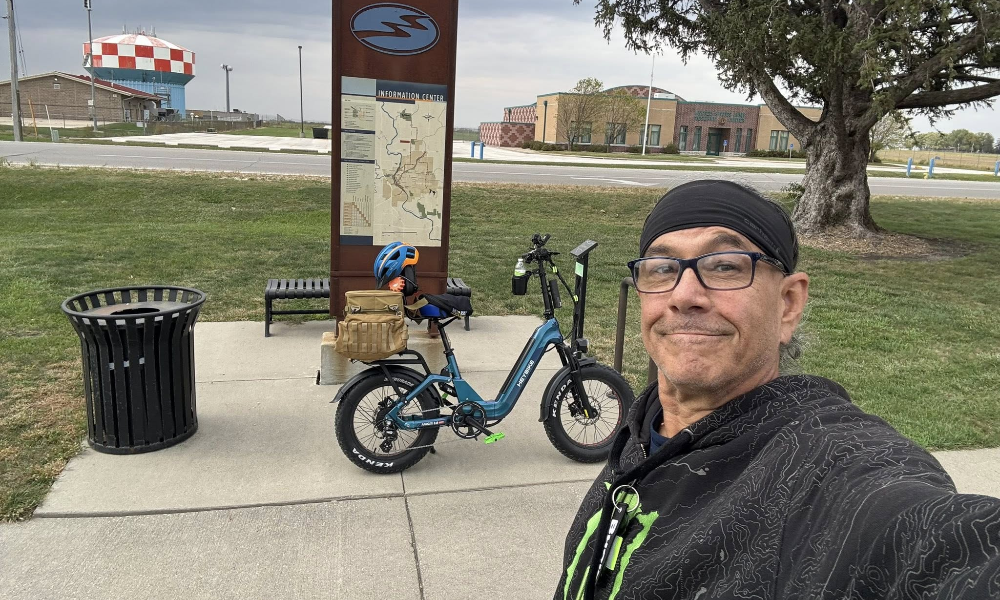Electric bikes have gained popularity in most urban areas in the recent past. They have made commuting an easy experience. Ebikes work on relatively smart technology. They have a controller, battery, electrical driving system, and motor. All these components make e-bikes more sophisticated and expensive than regular bikes.
An ebike controller is a crucial component in any electric bike. Without a controller, the motor will not run; thus, the bike will not start. If your ebike controller suddenly malfunctioned, how would you identify the problem? Are there any methods or procedures to follow when testing an e-bike controller? Does an e-bike controller require replacing or repairing?
In this article, we take a look at the ebike controller, and how to test if it is working. Keep reading to learn more.
What Is An Ebike Controller?
An ebike controller acts as the brain of the electric bike; it is an electric circuit unit responsible for controlling other bike components. It controls the motor's speed and the start and stop functions. The ebike controller is connected to every electronic component of the bike, such as the throttle, battery, display, motor, and speed sensor.

A controller is a unit that includes the main chips (microcontrollers) and the peripheral components (sensors, resistors, and MOSFET). Inside the ebike controller, there are signal processing circuits, AD circuits, power device driver circuits, PWM generator circuits, over-current protection circuits, power circuits, and under-voltage protection circuits.
Functions Of An Ebike Controller
The primary function of an ebike controller is to accept input signals from the electric components (speed sensor, throttle, motor, battery, display) and then decide what signal to return to each of them. It also controls all the central safety and protection mechanisms of an e-bike. These protection functions include:
1. Over-current protection
It reduces the current that goes to the motor if it’s too high. The controller checks the amount of current supplied to the motor. If there is excess current produced, it automatically shuts down the motor. This function protects both the ebike motor and the FET.
2. Over-voltage protection
Shuts down the motor when the voltage is too high. It prevents overcharge. The controller regularly monitors signals from the battery. When the voltage is too high, it sends signals to the motor to shut down the ebike.
3. Low-voltage protection
Shuts down the motor if the battery voltage is too low. It prevents over-discharge. This works similar to over-voltage protection described above, but when the battery produces low voltage.
4. Brake protection
Shuts down the motor when braking. It gives priority to the braking system for the safety of the rider. When the brake is applied, it signals the motor to shut down and stop the bike. This is a higher priority signal over the rest.
5. Over-temperature protection
Shuts down the motor if the temperature is too high. The ebike controller is responsible for keeping track of the Field Effect Transistor (FET) temperature. These transistors carry power. When the FET temperature gets too hot, the controller sends signals to shut down the motor to avoid short circuits on the transistors.
How to Test an Ebike Controller at Home
Basic electric bike troubleshooting is a skill every biker should have. For example, Learning how to test an ebike controller at home can save you from grounding your bike. There are two ways to test an ebike controller:
1. Using a Multimeter
This method is more technical than using an ebike tester; you will need a multimeter, controller, and battery. Here is a step-by-step guide on how to test your ebike controller using a multimeter:
- Step 1: Connect your controller to the battery.
- Step 2: Set the multimeter reading. This depends on what you want to test, resistance or continuity.
- Step 3: To test for continuity, set your multimeter to continuum. Connect the black multimeter cable to the negative terminal of the battery.
- Step 4: Test every line that comes out of the controller. If you hear a beep sound, it means there is a short in the line.
- Step 5: Set your multimeter to resistance mode to test for resistance.
- Step 6: Repeat the procedure as you did for continuity; only, in this case, you should read the digits displayed on your multimeter.
If the reading is lower than eight kilohms, it means there is damage on the line, or it's not working.
2. Using an Ebike Tester

Using an ebike tester is more advantageous since you will test the controller and all the parts of your bike as well. Ebike testers are available in the market in different varieties. Here is a step-by-step guide on how to test your ebike controller using an ebike tester:
- Step 1: Remove the ebike controller from the bike.
- Step 2: Disconnect the throttle from the bike and connect it to the ebike controller instead. This is to confirm that the controller gets signals from the throttle.
- Step 3: Connect the ebike tester to the controller.
- Step 4: Turn on the bike tester.
- Step 5: Turn on the throttle and observe the signal on the controller.
If the tester light is flashing, it means it's working. If only the middle light is flashing, it means your controller has a problem.
Frequently Asked Questions for Ebike Controller
Why Does My Ebike Keep on Cutting Out?
There is no specific straightforward answer to this question since ebike cutting out can be caused by various faults such as battery depletion, loose connection, low battery charge, wear and tear on the motor, etc. However, the primary reason for this is insufficient power or voltage to the motor.
How Can I Choose a Controller for My Bike?
When purchasing a controller for your bike, make sure the voltage control is equivalent to the motor voltage, and the power controller is the same as the motor power. However, if you buy a controller for a particular motor, double-check the power and the voltage controller.
How Long Does an Ebike Controller Last?
Averagely, an e-bike controller should last approximately 3-4 years, similar to a motor and battery. You can determine whether it needs replacement by using a multimeter to test the voltage passing through the terminals.
How to Reset My Ebike Controller?
The process for resetting the ebike controller might be a little different depending on different manufacturers, but here are some general steps for your references:
- Turn off the ebike and unplug the battery from your ebike
- Wait for a few seconds (at least 10 seconds) before plugging back the battery
- Turn on the ebike again and check whether the ebike controller has been reset
How Do I Know If My Ebike Controller is Bad?
There are several signs that your ebike controller might be bad, here are a few things to look out for:
- Motor is not working properly
- Display or lights are not functioning
- The battery has problem to charge
- The ebike controller is too hot
Conclusion
Generally, you can use a multimeter or an ebike tester to test an ebike controller at home. While using a multimeter, you can carry out two tests:
- Resistance test: This measures how much the resistance is, and you can tell there is damage if the multimeter reading is lower than eight kilohms.
- Continuity test: This shows you if you developed a short by peep.
You will know if your electric bike controller has a problem if the middle light is on. However, all five lights will keep flashing if it's working. We hope you found this informative. Now that you have the skills, you can confidently test your ebike controller at home.
Latest Stories
3000 Miles of Pure Joy: Greg’s Story with the Heybike ALPHA | Heybike Community
At 68, Greg conquered 3000 miles on his Heybike ALPHA ebike through Minnesota's trails. Every ride brought him fun, fitness, and freedom!
Freedom on Two Wheels: Ryan's Thrilling Rides on Mars 3.0 | Heybike Community
Ryan Davis shares his riding story on Heybike Mars 3.0 ebike. Have a look at his all-terrain adventures to see how the Mars 3.0 brings him true freedom.
From Walker to Rider: Darrel Rediscovering Youth and Joy on Ranger 3.0 Pro | Heybike Community
At 59, Darrel Abbe found youth and joy again riding the Heybike Ranger 3.0 Pro electric bike with his wife. Explore their story and the thrill of e-biking.



Share:
What Are the Different Types of Bike Brakes?
How to Size an Ebike
2 comments
Hi John Milleker, thank you for the details.
It sounds like you’ve done thorough troubleshooting already! Given the pedal assist is intermittent while the throttle works, and a new PAS sensor didn’t resolve it, the issue likely points to either the controller or potentially an intermittent wiring fault specific to the PAS circuit.
We recommend checking the wiring harness connected to the PAS sensor and controller for any subtle nicks or loose pins. If those appear fine, the controller is the next most likely component to test or replace. Consider contacting the e-bike manufacturer or a certified e-bike technician for further diagnostics, especially if you’re uncomfortable testing electrical components.
Thinking my controller is bad, pedal assist spurts but will not stay on. Throttle works fine. Cleaned the pas sensor and it worked for 10 miles. Ordered & installed new sensor, same results. Battery is fully charged all plugs connectors checked ok. Control panel works as it should. Help!